REGGIO EMILIA. Ai chiostri di San Domenico, in occasione di Fotografia Europea, fino al 15 giorni sarà esposto uno tra i lavori più interessanti dell’edizione 2014 del festival. Stiamo parlando di “Divine Violence” targata Broomberg & Chanarine e curata da Walter Guadagnini.
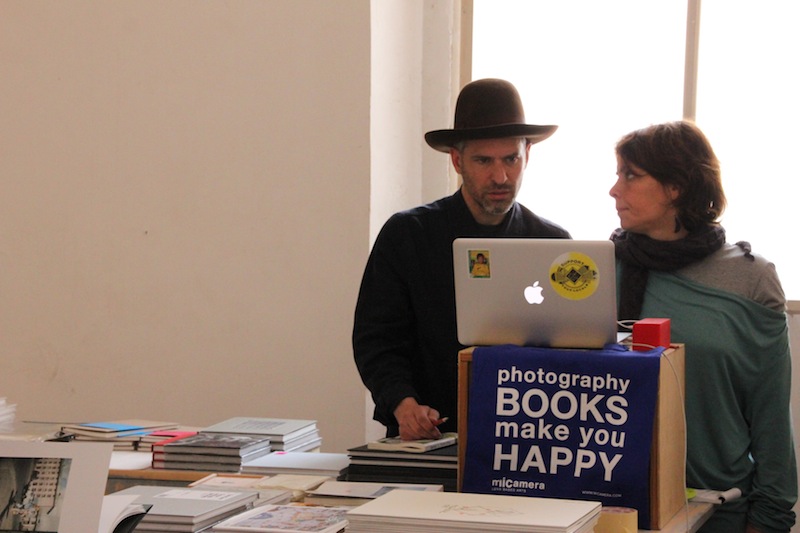
[quote_box_center] Un enorme lavoro di raccolta e ricerca quello realizzato da Adam Broomberg e Oliver Chanarin per Holy Bible, dove Broomberg e Chanarin hanno attinto fotografie dall’Archive of Modern Conflict scegliendo quelle che rievocavano alla mente il principio del filosofo Adi Ophir (“Fin dall’inizio, quasi ogni sua manifestazione era catastrofica… La catastrofe è il suo modo di agire, e il suo principale strumento di governo”) secondo il quale Dio si rivela prevalentemente attraverso la catastrofe e le strutture di potere all’interno della Bibbia sono correlate con quelle dei moderni sistemi di governo. Gli artisti esplorano temi della autorialità e i criteri inespressi adottati per stabilire un’accettabile testimonianza di conflitto.[/quote_box_center]
Un progetto interessante che noi abbiamo cercato di approfondire con Oliver Chanarin ospite di Fotografia Europea 2014. In occasione del booksigning ai Chiostri di San Pietro, organizzato da Micamera, abbiamo scambiato quattro chiacchiere con il fotografo.
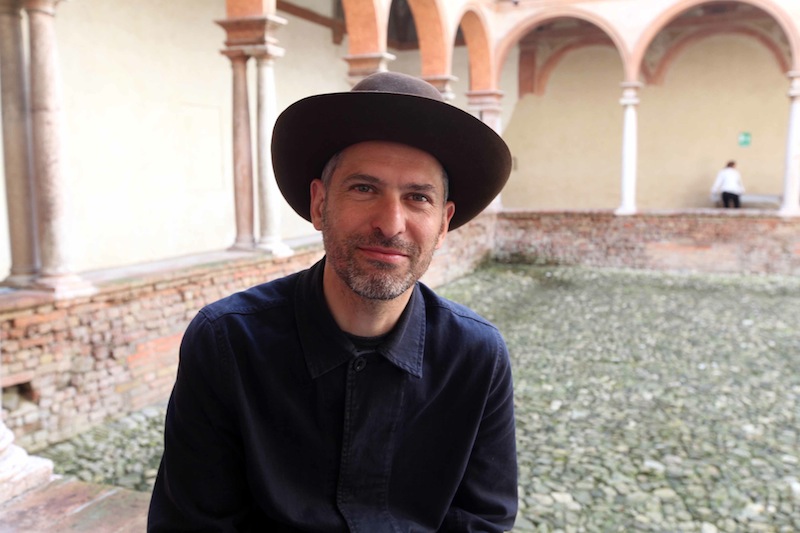
Hi, Oliver. Benvenuto a Reggio Emilia. Senti, com’è nato il progetto Holy Bible?
E’ cominciato mentre stavamo lavorando ad un altro progetto chiamato War Premier 2. Avevamo sottomano un libro su Brecht pubblicato nel 1955 e facendo ricerche siamo entrati negli archivi fotografici berlinesi. Il curatore ci mostrò un oggetto molto interessante, ovvero la bibbia appartenuta a Brecht. Lui usava la bibbia come una sorta di notebook dove scriveva, sottolineava e inseriva fotografie, parecchie piccole foto spesso provenienti da quotidiani. Così ci è venuto in mente di “de-costruire” la bibbia e rappresentarla per immagini, attualizzandola.
Avete riprodotto l’intera bibbia in cui le fotografie si legano a passaggi sottolineati. A tal proposito, come sono stati scelti i versetti sottolineati, cosa rappresentano?
Abbiamo cominciato a leggere tutta la bibbia, per la prima volta l’ho letta tutta dall’inizio alla fine ed è stato abbastanza lungo, ci ho messo tutta l’estate… poi io e Adam abbiamo cominciato a sottolineare passaggi, parti che sentivamo molto attuali, contemporanee. Un contributo fondamentale è stato poi “Divine Violence: Two Essays on God and Disaster”, libro scritto da Adi Ophir con riflessioni molto interessanti. Se andate a leggere l’Antico Testamento dalla prima all’ultima pagina, è impossibile non notare che Dio si rivela attraverso catastrofi, attraverso la violenza. Cose terribili continuano a succedere: un diluvio che cancella parte della sua creazione, la distruzione di Sodoma e Gomorra… assistiamo costantemente alla morte su scala epica e le vittime non sanno quasi mai che cosa hanno fatto per meritare tale punizione. Adi riflette su questo tema della catastrofe che si collega con le nostre vite moderne, possiamo dire che questa è stata la guida per il nostro progetto.
Tutto quindi ha un filo conduttore…
L’Antico Testamento è essenzialmente una parabola della crescita di una governance moderna (Dio alla fine sceglie il suo popolo, gli lascia tavole con 10 comandamenti e li punisce quando queste vengono rotte). Allo stesso tempo, egli fa notare che, quando le sue leggi vengono infrante, emana punizioni incredibilmente violente. Quindi, questa lettura della Bibbia suggerisce un contratto dove tutti siamo silenziosamente e forzatamente vincolati con lo Stato moderno e accettiamo ingenuamente dure punizioni. La prigione, la condanna a morte, guerra alla droga, al terrorismo… La macchina fotografica è sempre stata attratta da questi temi, dai luoghi di sofferenza umana. Fin dall’inizio è stata utilizzata per registrare eventi catastrofici. Catastrofe e la crisi sono il pane quotidiano delle notizie e noi vi siamo assoggettati.
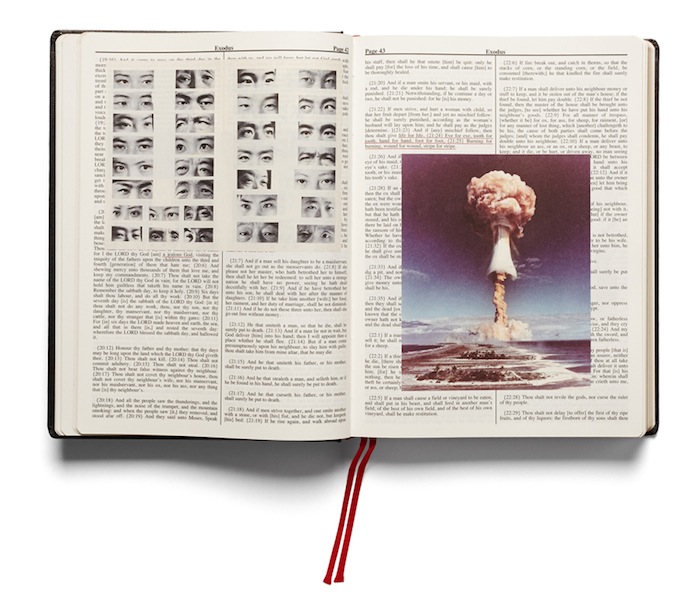
La chiesa ha infatti sempre usato la potente arma della paura, della punizione, del dio vendicativo che si sarebbe manifestato minaccioso se non fossero state rispettate certe direttive. Questo ha permesso di accrescere il numero di credenti che per non incorrere in collere in questa vita o in una futura, hanno obbedito. Che ne pensi?
Mah, noi abbiamo preso l’importante decisione di non parlare della chiesa ma del governo. Abbiamo affrontato il tema del potere piuttosto che quello della fede, il modo in cui il potere opera, di come minaccia, di come riesce ad avere il controllo.
Qui a Fotografia Europea mettete in mostra una parte del vostro lavoro?
A Reggio Emilia abbiamo portato l’intera bibbia. Non è nata come un libro, non l’abbiamo pensata come ad un volume da mettere in vendita ma come ad un collage. Abbiamo staccato pagine e pagine che ci colpivano poi le abbiamo attaccate al muro e abbiamo messo sopra immagini… un lavoro tridimensionale, insomma. L’esposizione che abbiamo qui a Reggio è infatti molto fedele al progetto che abbiamo fatto. Alla fine ne è stato tratto un libro che ha proprio l’aspetto di una bibbia ma il nostro progetto iniziale è quello che potete vedere in questa mostra. Non tutti possono però comprare il libro, anche perché ce n’è un numero limitato, la funzione dell’esposizione è proprio quella di mostrare a tutti il nostro lavoro, la relazione tra pagine, testi e immagini.
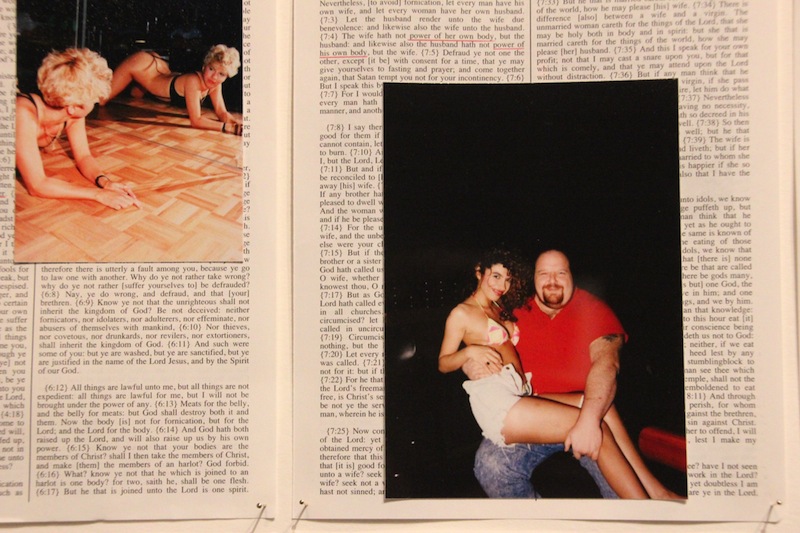
Quali sono i vostri soggetti fotografici preferiti? Di cosa piace occuparvi?
Mah, guardando indietro ai lavori di cui ci siamo occupati io e Adam negli ultimi 17 anni spicca sicuramente il rapporto tra fotografia e razza che abbiamo affrontato con i nostri viaggi in Gabon. Tho photograph the details of a dark horse in low light, era in origine la frase in codice usata da Kodak per descrivere le funzionalità di una nuova pellicola sviluppata nei primi anni Ottanta per affrontare l’incapacità dei loro film precedenti di rendere con precisione la pelle scura. Jean-Luc Godard si era rifiutato di usare la pellicola Kodak durante un incarico in Mozambico nel 1977, sulla base del fatto che la pellicola era intrinsecamente ‘razzista’. Così, in risposta ad un incarico di documentare il Gabon, io e Adam abbiamo fatto diversi viaggi verso il Paese per fotografare una serie di rari rituali di iniziazione Bwiti, utilizzando però solo pellicola Kodak che era scaduta alla fine del 1950. Oltre a questo interessante esperimento devo dire che siamo entrambi attratti dalla relazione tra fotografia e sofferenza, sull’incapacità della fotografia di esprimere la sofferenza in modo univoco.
Tu e Adam siete un team da parecchi anni. Com’è organizzato il vostro lavoro? C’è una sorta di brainstorming prima di un progetto o lasciate che le cose “succedano”?
Beh, devo dire che non c’è una formula precisa. Qualche vota è lui che parte con un’idea, comincia a studiarla poi me ne parla e vediamo se può essere sviluppata… altre volte, invece, ci viene in mente qualcosa che però non si rivela molto interessante e così abbandoniamo l’idea. Spesso succede che parlando nasce qualcosa e scatta una molla in modo istantaneo in entrambi e capisci che è la via giusta da percorrere, che si può sviluppare un progetto.
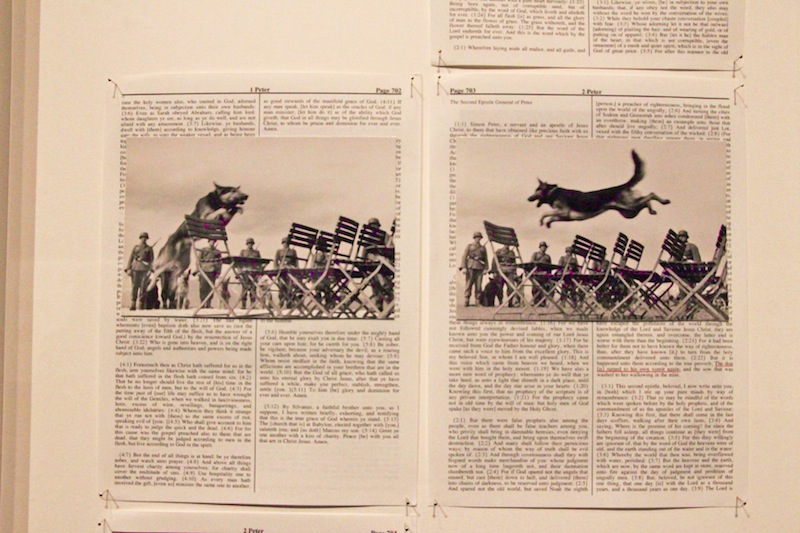
Come ultima domanda di questa breve intervista non posso esimermi dal chiederti un classico: prossimi progetti?
Ah ah, (ride) la gente chiede sempre dei prossimi progetti, ma non è facile rispondere. Ci possono essere delle idee, delle cose che abbiamo in testa ma non sappiamo se riusciremo a realizzarle o se ne valga la pena. In generale, non c’è mai nulla di completamente pianificato. Con certezza posso solo dire che faremo una mostra in Messico dove nel 1968 una aereo B52 si schiantò durante le riprese di Catch 22 di Mike Nichols. Si tratta di uno scavo archeologico per un aereo che è stato utilizzato nella guerra , poi in un film di fiction sulla guerra e poi sepolto e dimenticato.
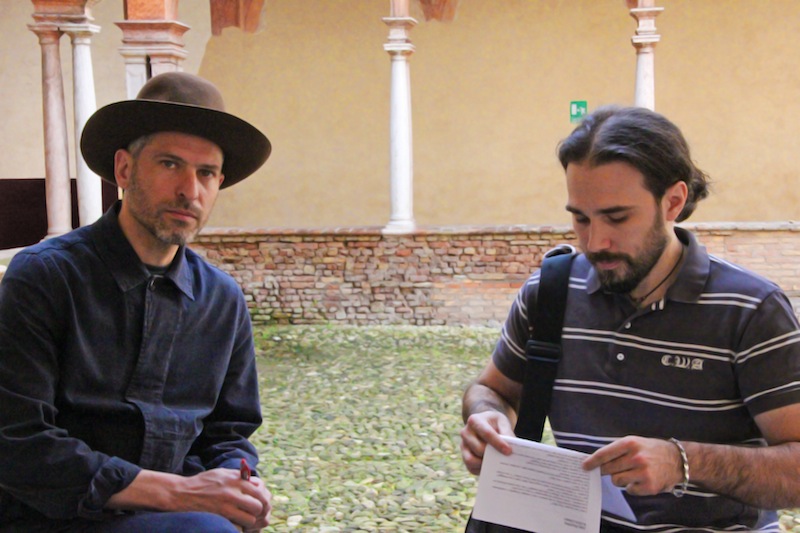
REGGIO EMILIA. The Chiostri of San Domenico, on the occasion of Fotografia Europea, up to the 15 of june will be exposed one of the most interesting works of the festival 2014 edition. We’re talking about “Divine Violence” signed by Broomberg & Chanarine and curated by Walter Guadagnini.
[quote_box_center]A huge work of collection and research that Adam Broomberg and Oliver Chanarin did for Holy Bible, where Broomberg and Chanarin have drawn from the photographs Archive of Modern Conflict choosing the ones conjured to mind the principle of the philosopher Adi Ophir (“From the beginning almost all his manifestations was catastrophic… the disaster is his way of acting, and his main instrument of government ” ) according to which God is revealed primarily through the catastrophe and the power structures within the Bible are correlated with those modern systems of government. The artists explore issues of authorship and the criteria adopted to establish an acceptable unspoken testimony of conflict.[/quote_box_center]
An interesting project that we have tried to investigate with Oliver Chanarin guest of European Photography 2014. During the booksigning at the Cloisters of St. Peter, organized by MiCamera , we exchanged a few words with the photographer.
Hi, Oliver. welcome to Reggio Emilia. Look, how the project came about Holy Bible?
It’s started while we were working on another project called War Premier 2. We had a book on Brecht published in 1955 and we were doing a research as we walked in the photographic archives in Berlin. The curator showed us a very interesting object, which is the bible belonged to Brecht. He used the Bible as a kind of notebook where he wrote, underlined and inserted photographs, several small pictures often from newspapers. So we had the idea of ” de-construct” the bible and represent it in pictures, updating it.
You have played the entire Bible in which the photographs are linked to underlined passages. In this regard, how underlined verses have been selected, what do they represent?
We began to read the whole Bible, for the first time I read it all from start to finish and it was quite long, it took me all summer… then Adam and I have begun to emphasize passages, parts of which felt very current and contemporary. A fundamental contribution was then “Divine Violence: Two Essays on God and Disaster”, a book written by Adi Ophir with very interesting thoughts. If you read the Old Testament from cover to cover, it is impossible not to notice that God reveals himself through disasters, through violence. Terrible things keep happening: a flood erasing part of his creation, the destruction of Sodom and Gomorrah… constantly witnessing the death on an epic scale and the victims do not know hardly what they did to deserve such punishment. Adi reflects on this issue of the catastrophe that connects with our modern lives, we can say that this was the guide for our project .
So, everything has a thread …
The Old Testament is essentially a parable of the growth of modern governance (God chooses his people to the end, leaving the boards with 10 commandments, and punishes them when they are broken). At the same time, he points out that when its laws are broken, exudes incredibly violent punishments. So, this reading of the Bible suggests a contract where we are all silently and forcibly bound by the modern state and naively accept harsh punishments. The prison, the death penalty, the drug war, terrorism… The camera has always been attracted to these issues, from places of human suffering. From the beginning it was used to record catastrophic events. Disaster and crisis are the bread and butter of the news and we are subject.
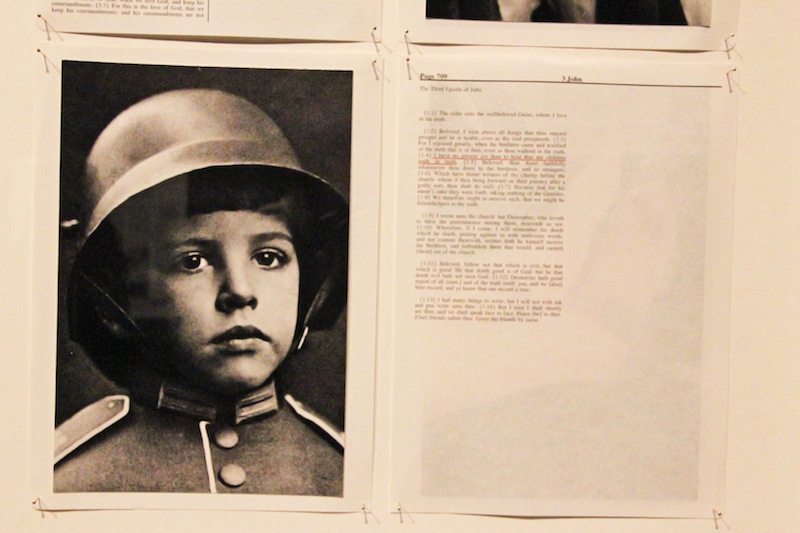
The church has in fact always used the powerful weapon of fear of punishment, the vengeful God that would manifest threatening if they had not been complied with certain directives. This has allowed us to increase the number of believers in order to avoid anger in this life or in a future, they obeyed . What do you think?
Well, we took the important decision not to speak of the church but of the government. We have addressed the issue of power rather than that of faith , the way in which power operates, how the threat, of how he can be in control.
Here in Fotografia Europea exhibition you’ll show a par of your job?
In Reggio Emilia, we brought the entire bible. It was not born like a book, we have not thought of as a volume to be sold but as a collage. We unplugged pages and pages that hit us then we stuck to the wall and we put on pictures… a three-dimensional work, in fact. the exposure we have here in Reggio is indeed very faithful to the project that we did. In the end it was made into a book that has the appearance of a bible but our initial plan is what you can see in this exhibition. Not everyone, however, can buy the book, because there is a limited number, the display function is just to show everyone our work, the relationship between pages, text and images.
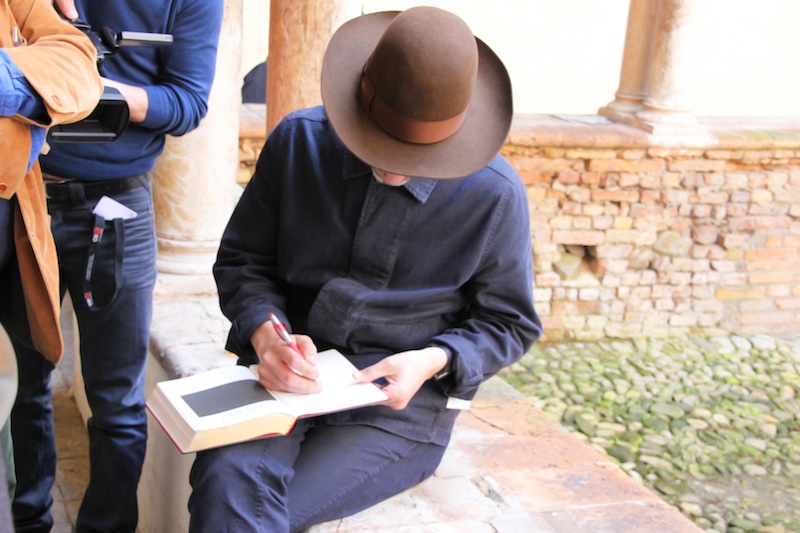
What are your favorite photographic subjects? Do you like to take care of what ?
Well, looking back at the work we have dealt with Adam and I over the last 17 years was without a doubt the relationship between photography and race that we dealt with on our travels in Gabon. “To photograph the details of a dark horse in low light”, was originally the code phrase used by Kodak to describe the functionality of a new film developed in the early eighties to address the inability of their previous films to accurately render the dark skin. Jean-Luc Godard had refused to use the Kodak film during an assignment in Mozambique in 1977, based on the fact that the film was inherently ‘ racist ‘ . Thus, in response to an assignment to document Gabon, Adam and I have made several trips to the country to photograph a series of rare Bwiti initiation rituals, but using only Kodak film that had expired at the end of 1950. Apart from this interesting experiment I must say that we are both drawn to the relationship between photography and suffering, inability to express the suffering of photography in a unique way.
You and Adam are a team from several years. How is it organized your work? Is there a kind of brainstorming before a project or you just let things “happen” ?
Well , I must say that there is no precise formula. Few times He starts with an idea, then I began to study it and see if His speaks can be developed… other times, however, there is something in mind but does not reveal very interesting and so abandon the idea. It often happens that talking about something takes a spring instantly in both and understand that it is the right way to go, so you can develop a project.
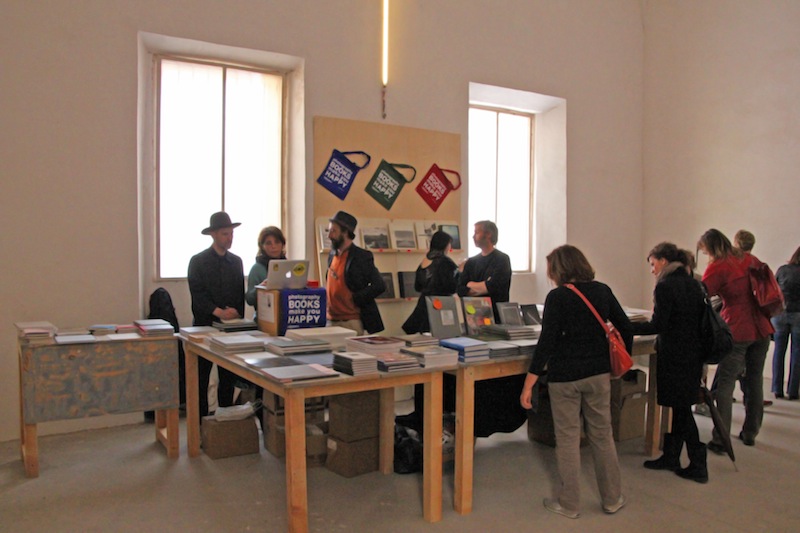
As a last question of this short interview I can not ask a classic: next projects?
Ha ha (laughs) people always ask for next project, but it is not easy to answer. There may be some ideas of things we have in mind but do not know if we can implement them or if it’s worth it .In general, nothing is ever completely planned. I can only say with certainty that we will do an exhibition in Mexico, where in 1968 a B-52 plane crashed during the filming of Catch 22 by Mike Nichols. It is an archaeological excavation for a plane that was used in the war, then in a fiction film about the war and then buried and forgotten.
©RIPRODUZIONE RISERVATA

